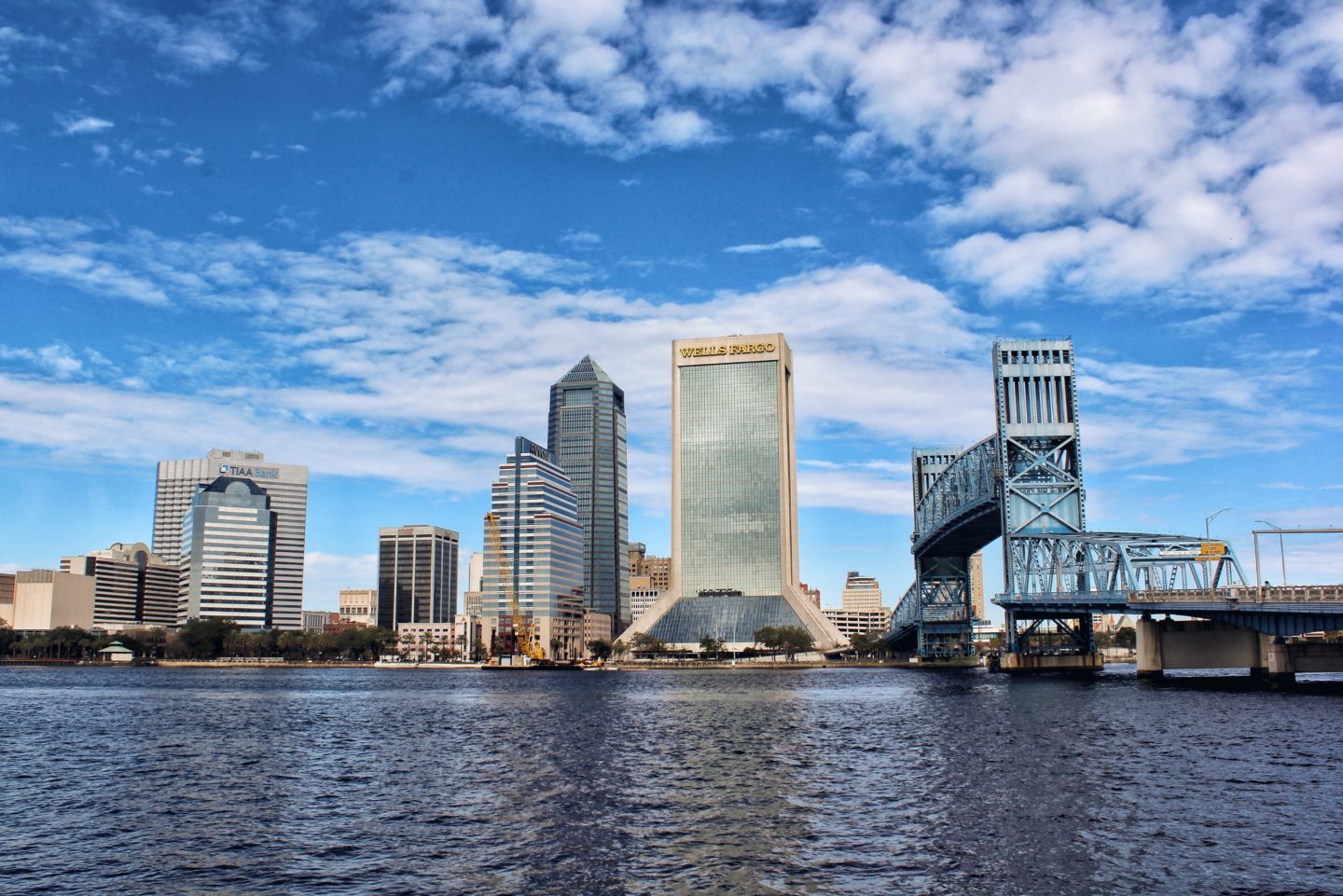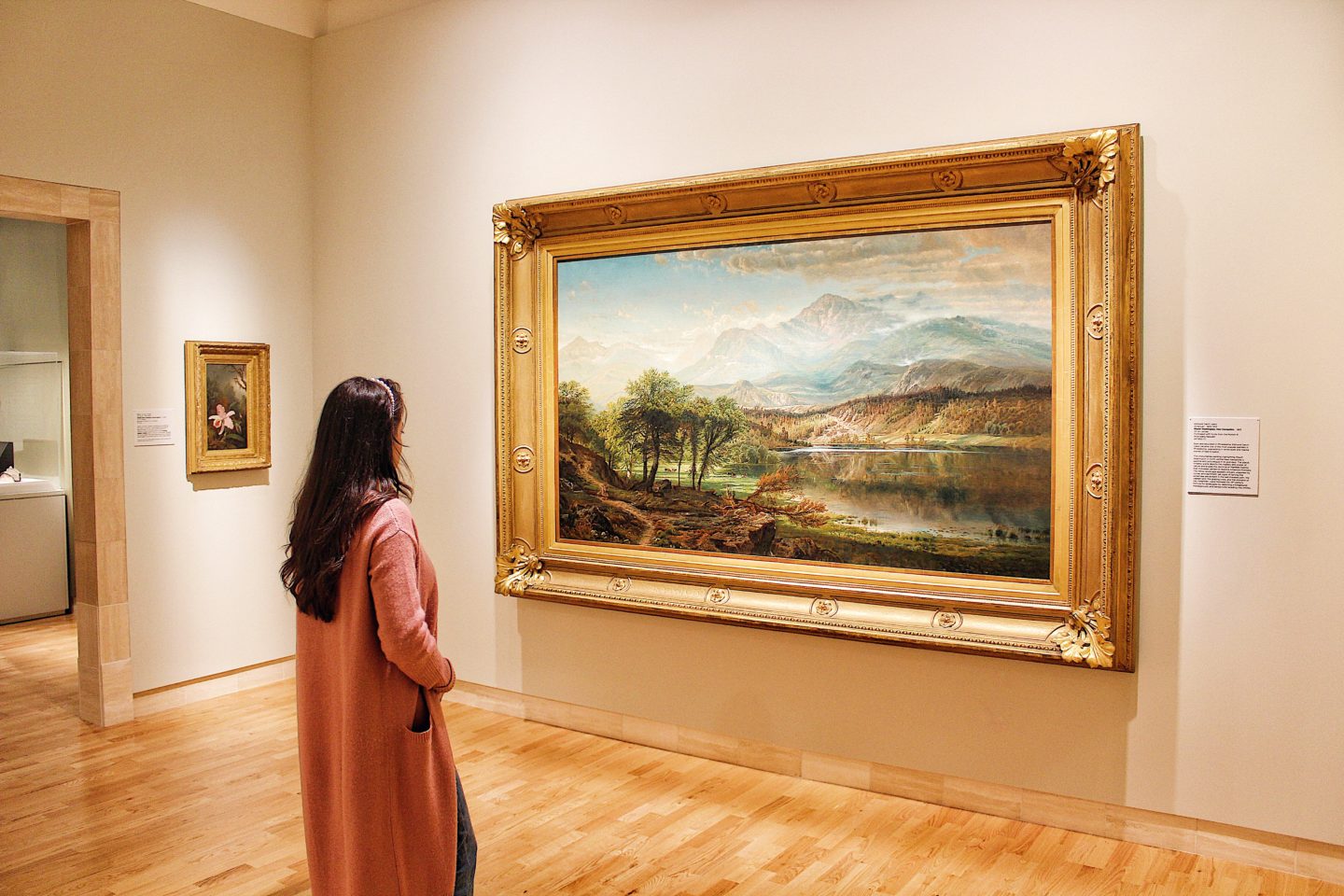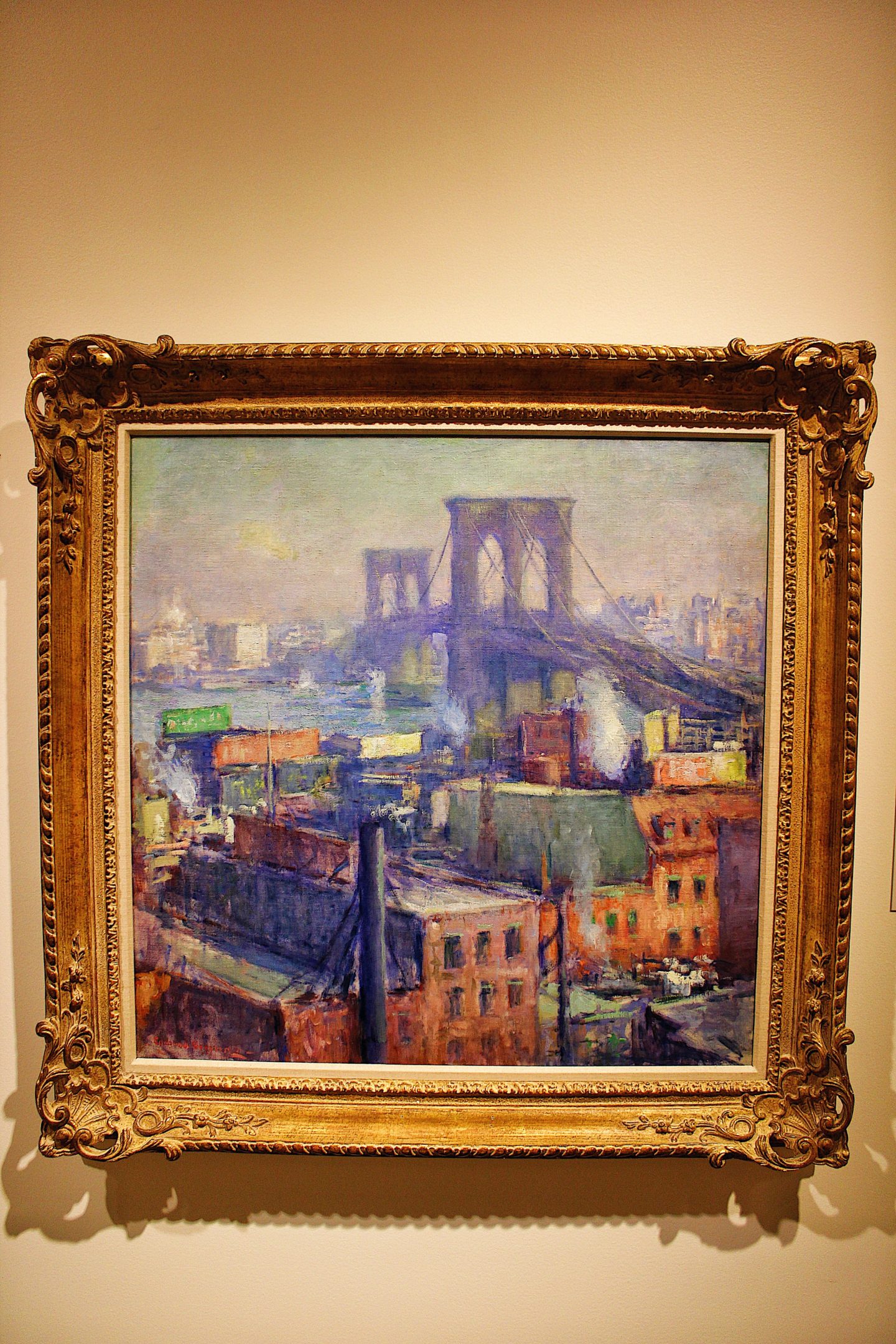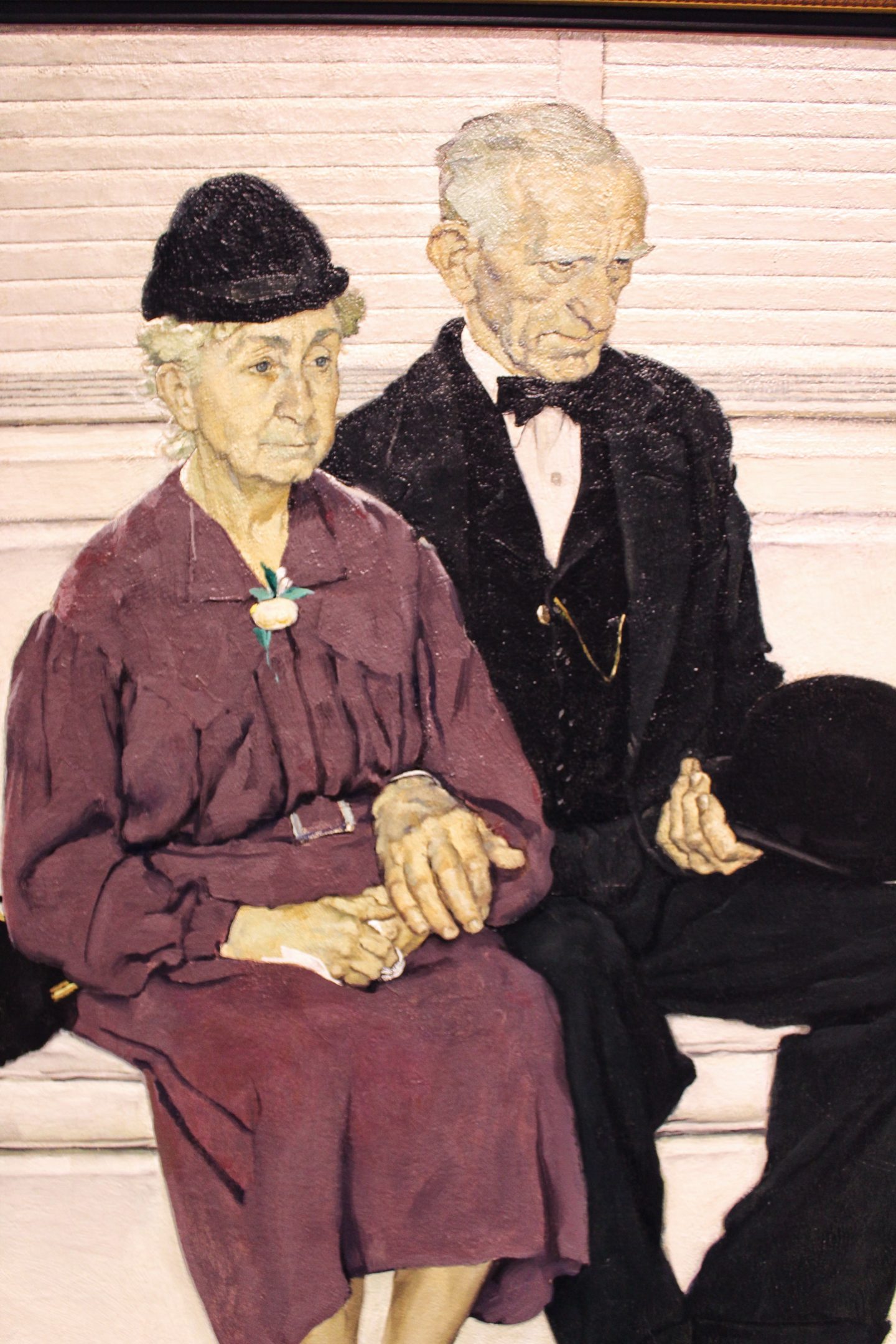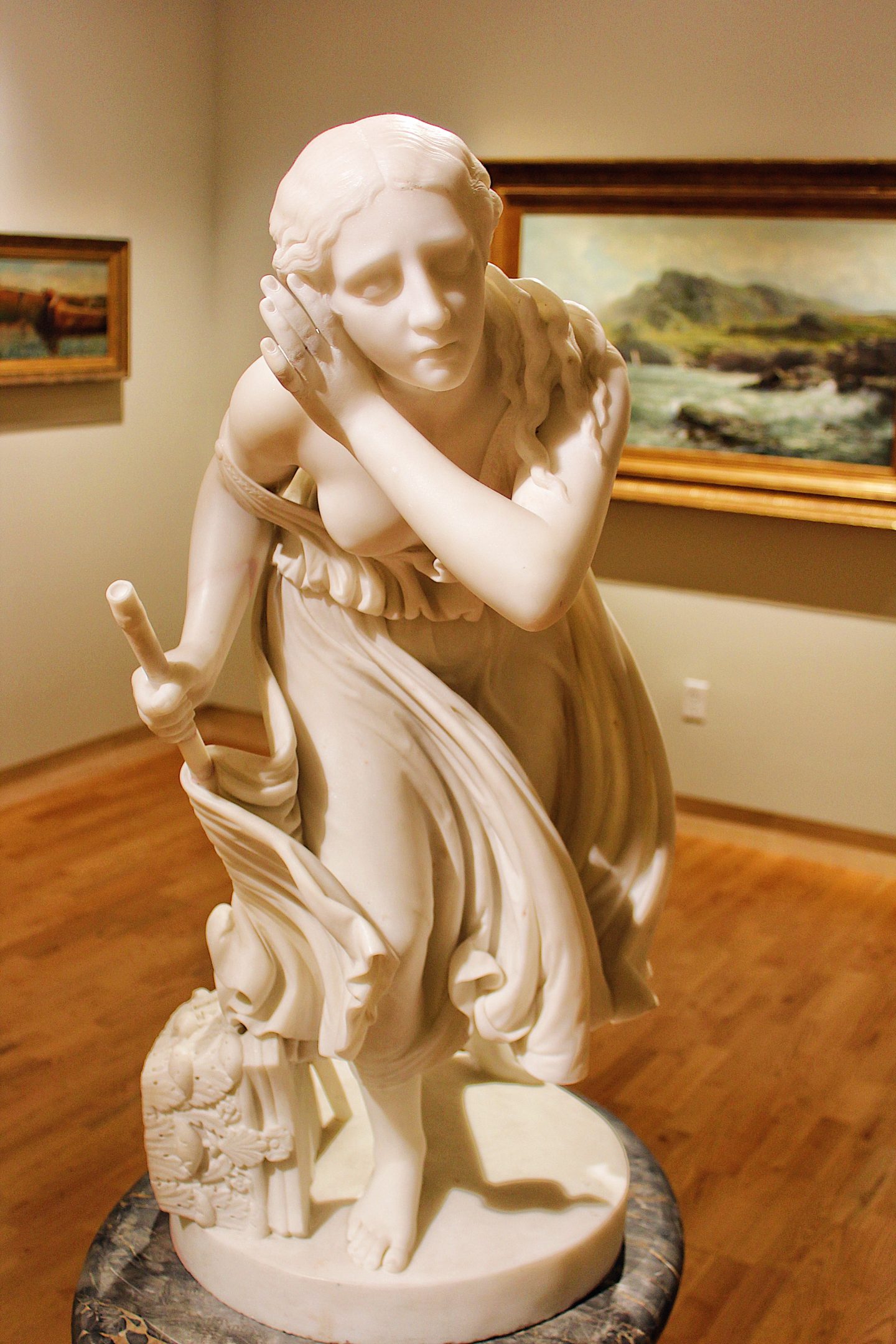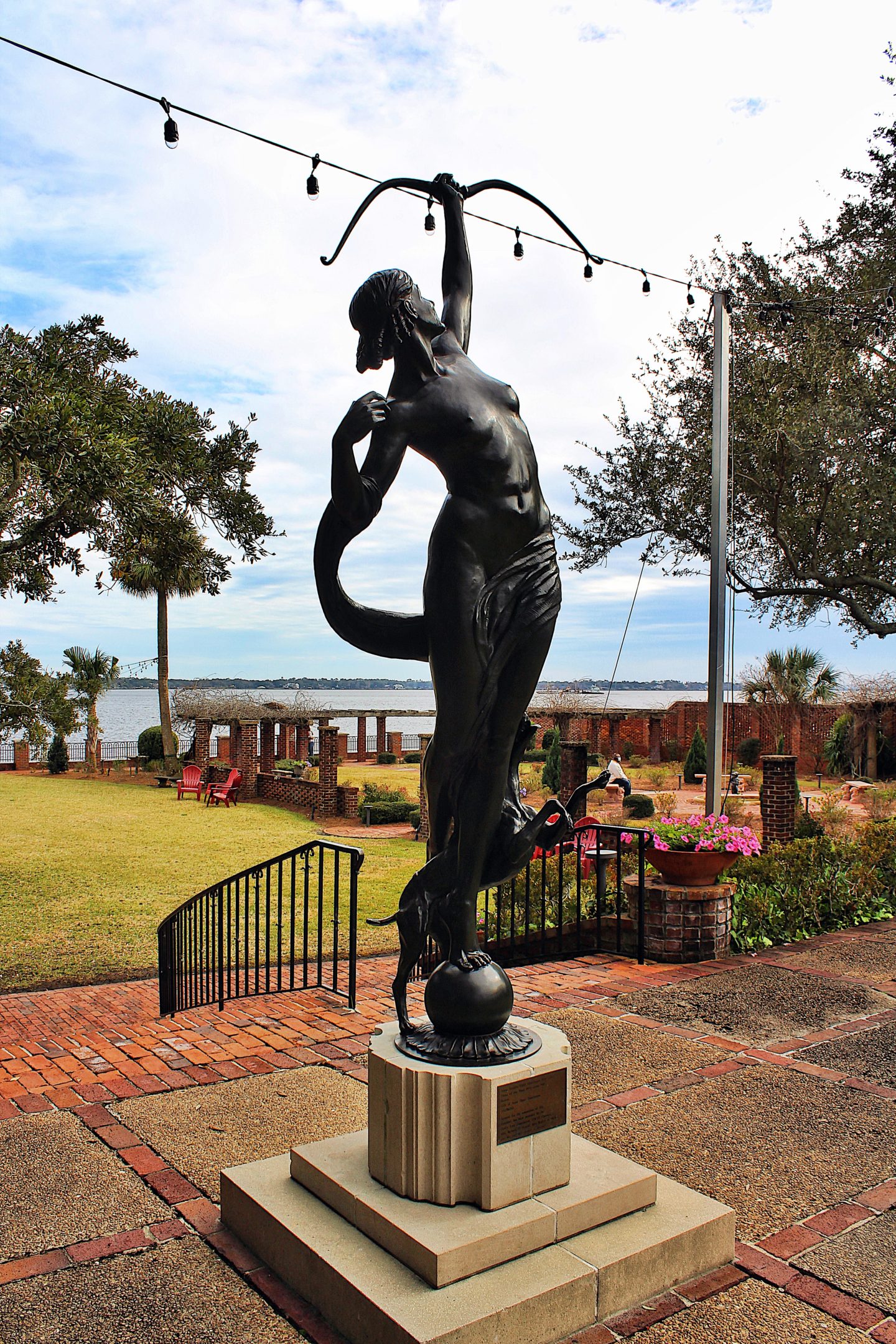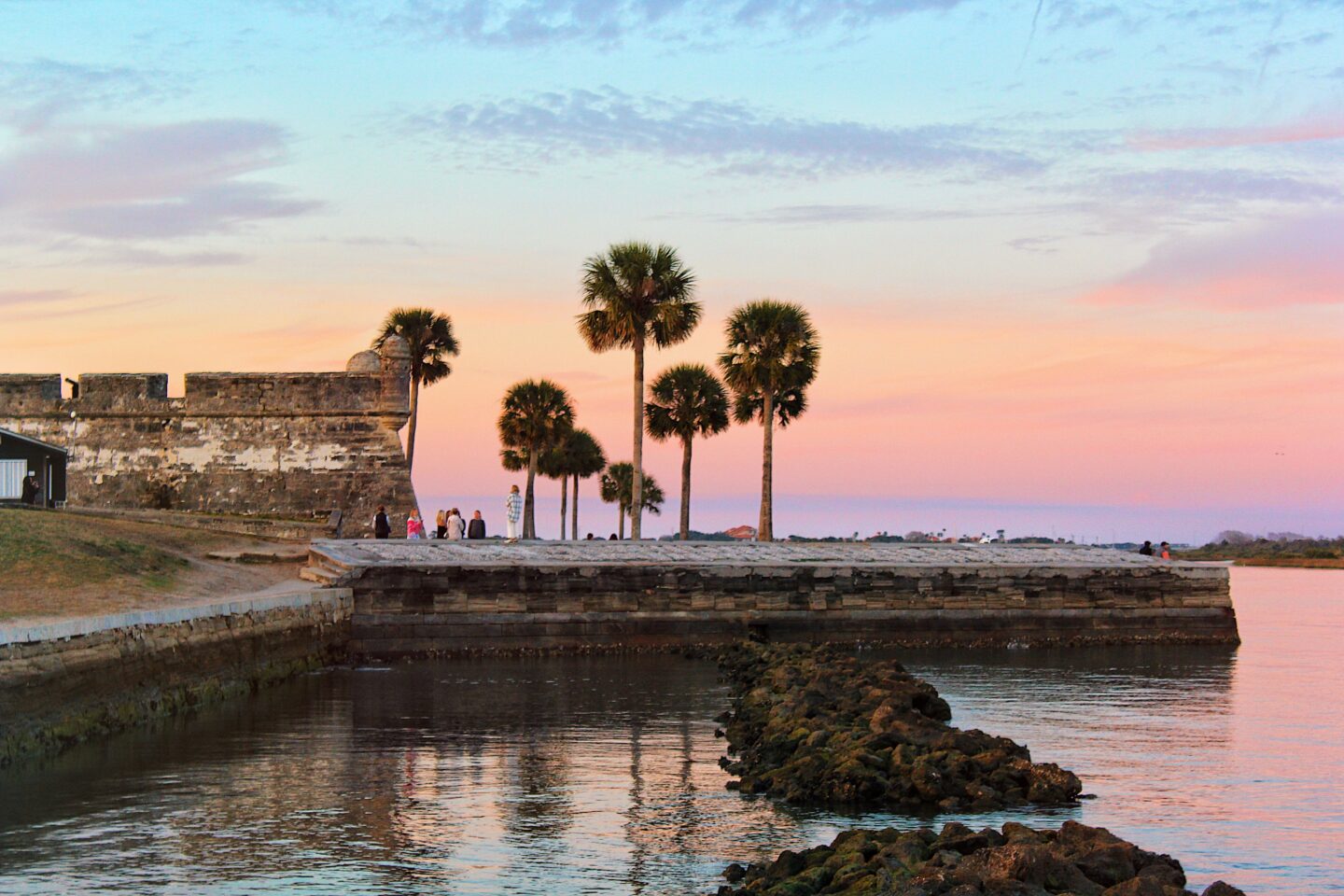
2 Days in St. Augustine Florida Itinerary
After spending a couple of months in Miami, it was time to start heading back to New York City. As we made our way north, we stopped in northeast Florida to visit St. Augustine.
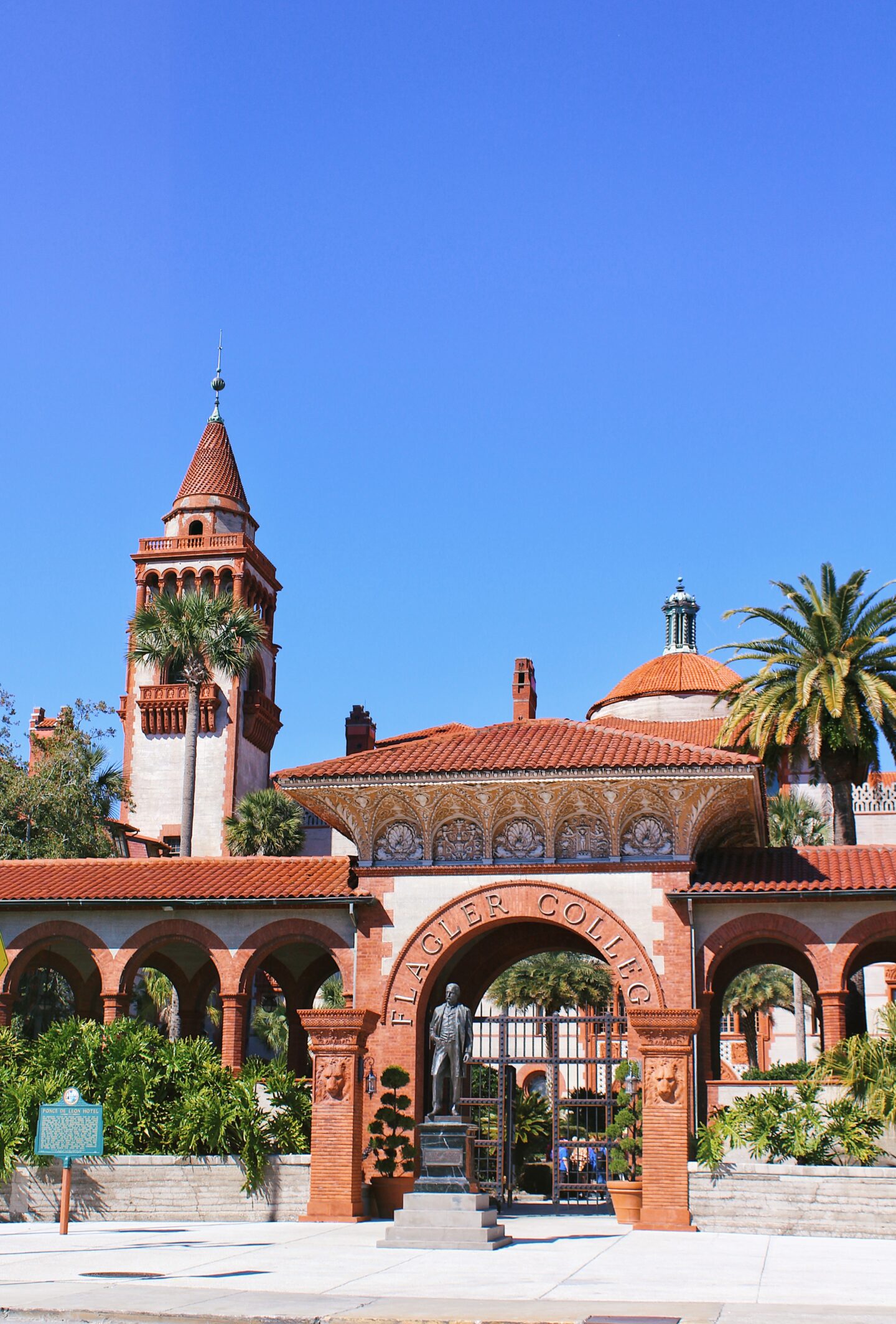

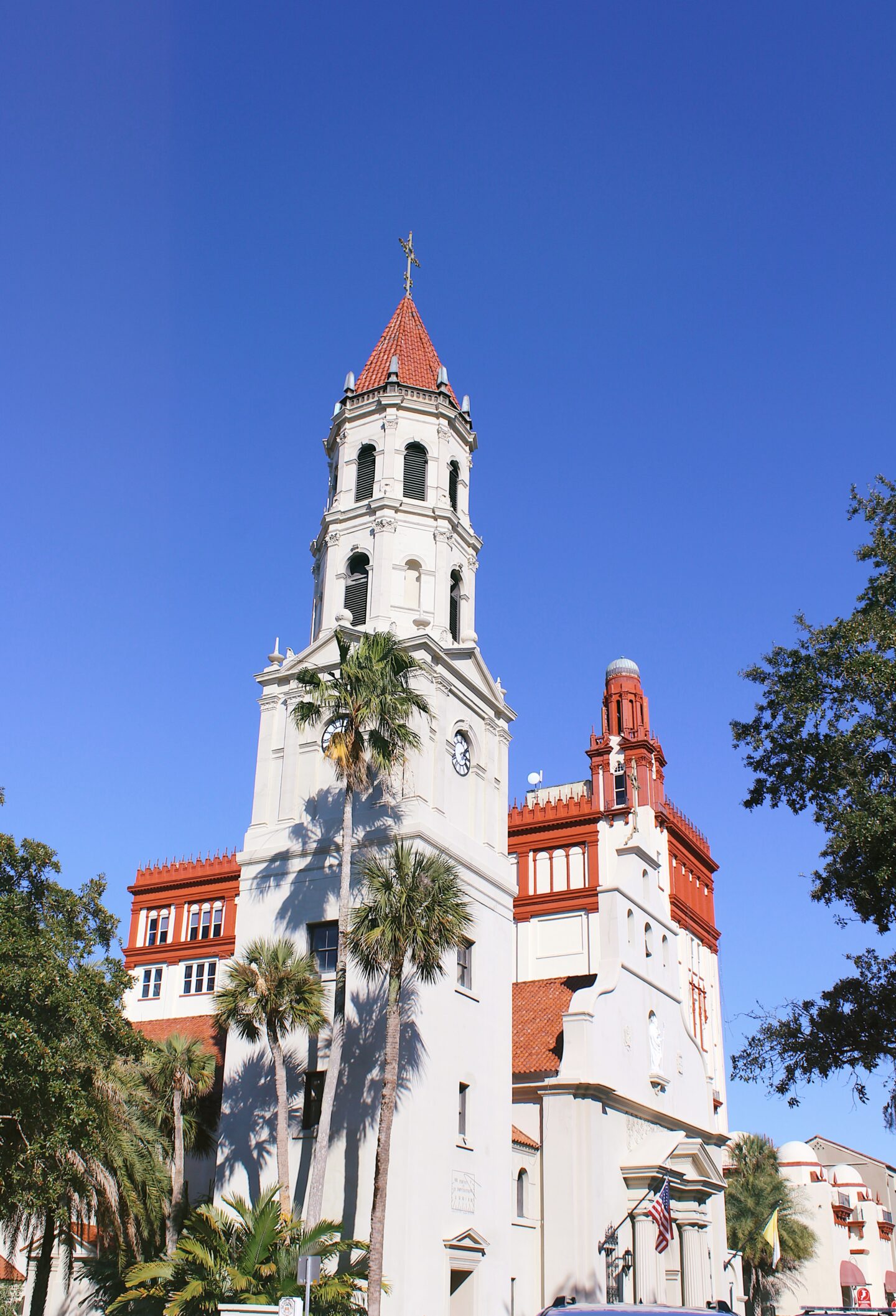

Why visit St. Augustine, Florida?
St. Augustine is the oldest continuously settled city in the United States, and it is rich in culture, history, and architecture.
Are 2 days in St. Augustine enough?
Absolutely! Seeing historic St. Augustine in 2 days is doable because it is a compact and walkable city. St. Augustine is the perfect city for history lovers and those who want to experience Old Florida.
Pin this post!
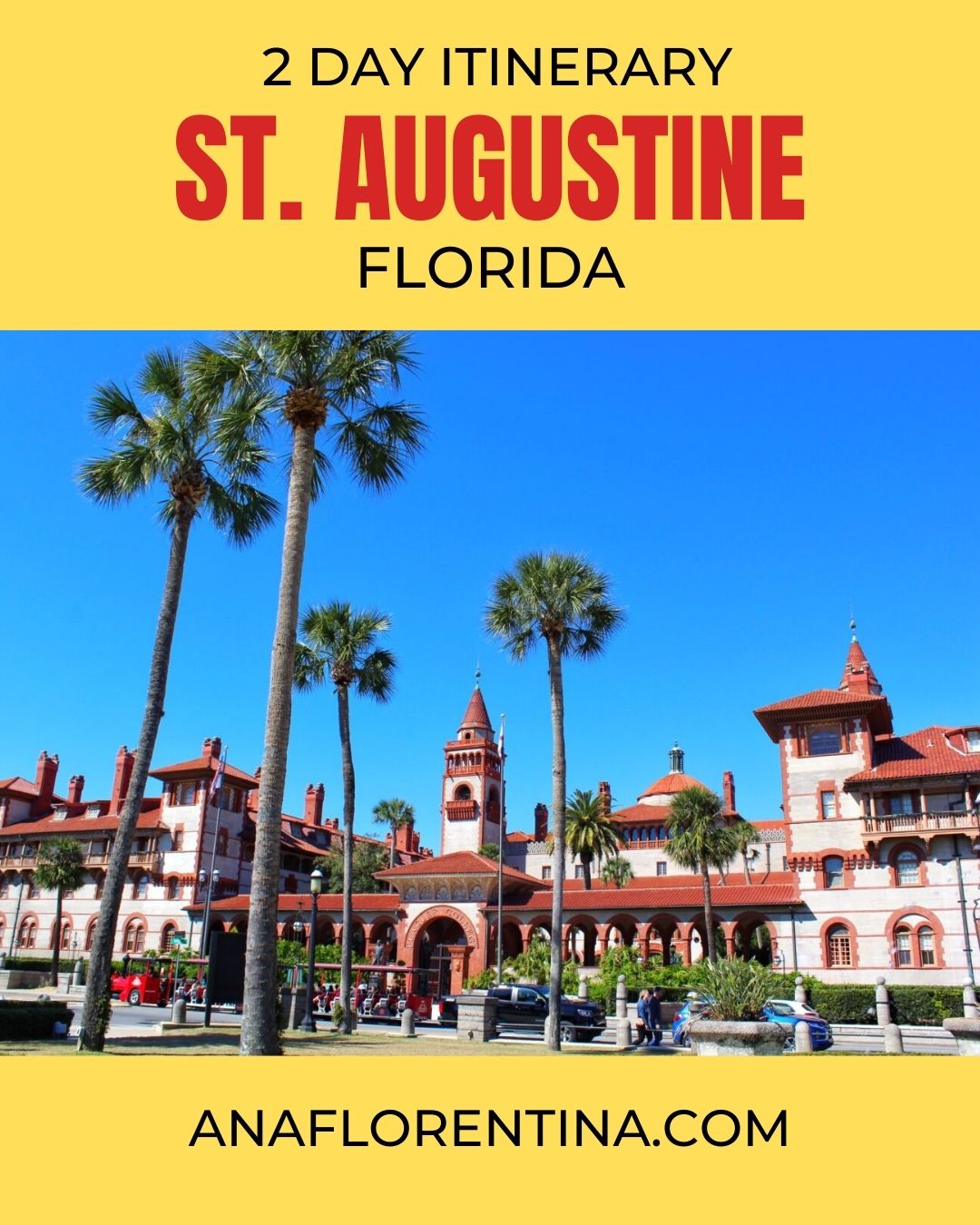
You can easily plan a trip to St. Augustine, Florida, with this 2 day itinerary covering St. Augustine’s top sites and attractions.
After reading this article, you will be able to customize your itinerary and make the most of your visit.
Read on for my tips on where to stay and where to eat in St. Augustine, and amazing day trips to do from St. Augustine, in case you have more time.
St. Augustine Itinerary – Day 1
Take the Old Town Trolley Tour
I am a big fan of the Trolley Tour. Trolley tours are available in only 7 cities in the United States, and St. Augustine is one of them.
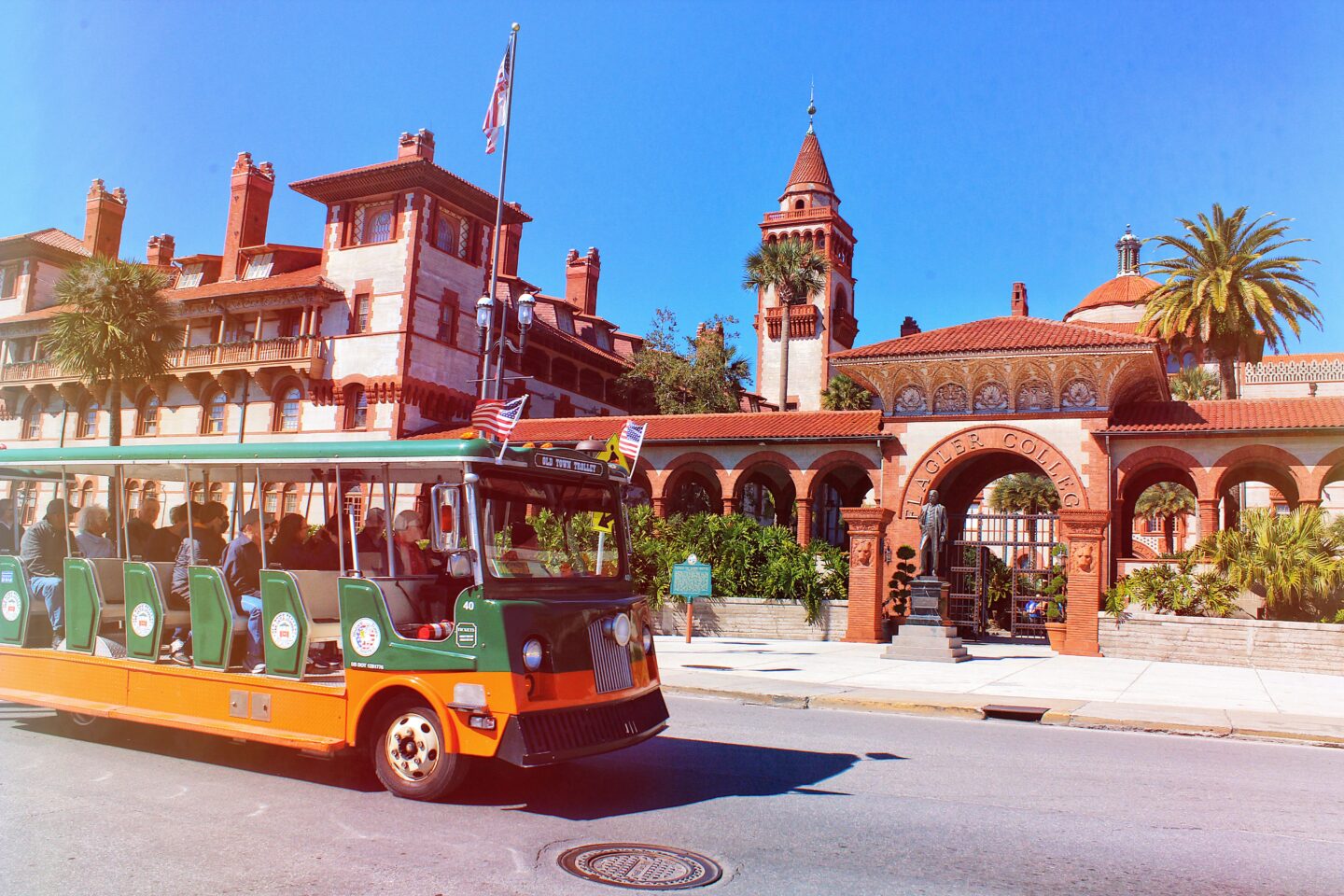
What I love the most about the trolley is that it becomes your taxi, and you can Hop-on and Hop-off all day long. I’ve taken the trolley in various cities and always find it incredibly practical and enjoyable.
If you don’t have many days to explore St. Augustine or are unable to walk for hours, the trolley will help you see the best highlights of the city.
I recommend jumping on the trolley as soon as it opens at 9:00 AM. The last trolley departs at 4:30 PM, and it is worth noting that a complimentary hotel shuttle service is included in your ticket.
Here’s the popular trolley tour that provides an overview of St. Augustine:
Or enjoy St. Augustine aboard this scenic cruise during sunset.
Visit the Cathedral Basilica of St. Augustine
The Cathedral Basilica of St. Augustine is the 8th stop in the Old Town Trolley Tour and the first one that I, and half of the trolley, decided to hop off at.
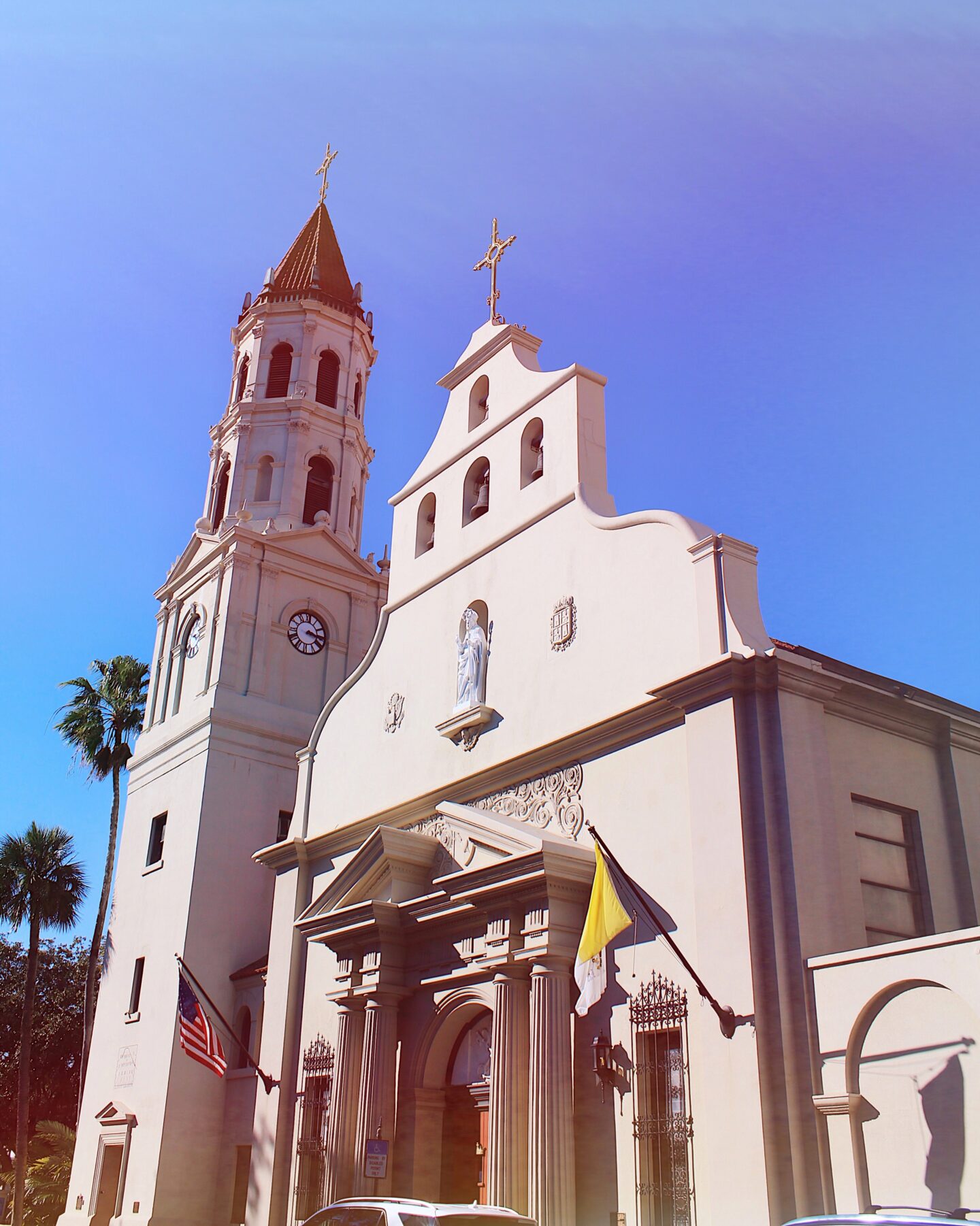
The cathedral is home to the nation’s first Catholic parish. After multiple attempts, it was built in 1797, then rebuilt after a fire in 1887.
The facade is a combination of Spanish mission and Neoclassical styles, and the interior is adorned with murals and stained glass windows.
There is so much to see in the beautiful details. Here is the photo I took of the cathedral’s unique interior.

On September 8, 1565, Father Francisco Lopez de Mendoza Grajales celebrated the first mass as he proclaimed the land in the “Nombre de Dios” (“Name of God”). He was the chaplain who accompanied St. Augustine’s founder and the Spanish explorers.
Walk the grounds of Mission Nombre de Dios
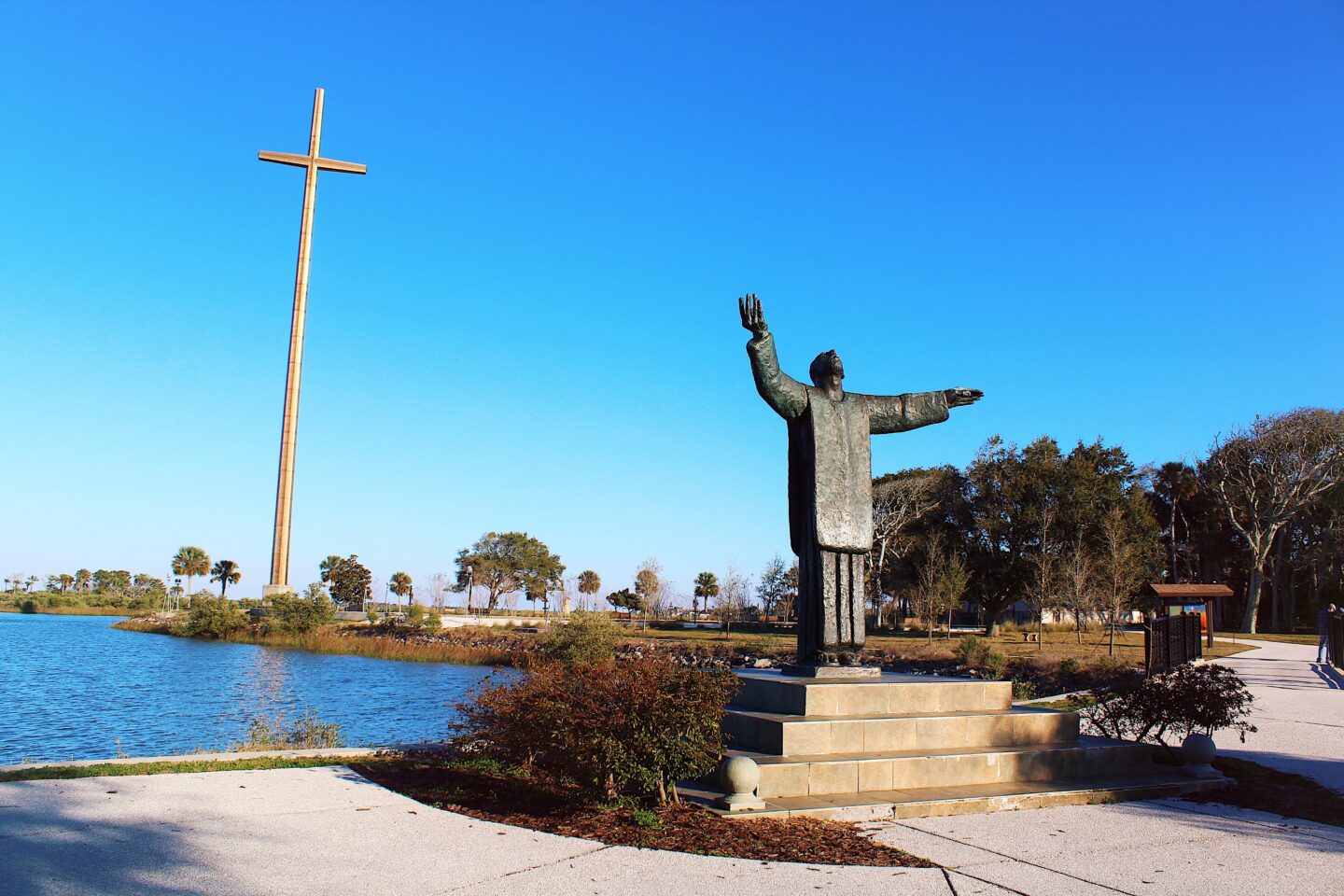
It is at this location that the Great Cross, which rises 208 feet, was erected in 1965 to commemorate the 400th anniversary of the beginning of Christianity in this land.
The 208’ bronze cross is the tallest in the Western Hemisphere. A gift from the Vatican, it was capped at that height to avoid the installation of a mandatory aircraft warning light.
These first Spanish settlers brought with them a devotion to the Blessed Virgin Mary and established the Holy Virgin’s first sanctuary in the U.S. on the grounds. They built a chapel and dedicated it to “Nuestra Señora de La Leche” (“Our Lady of Milk & Safe Delivery”).
Visit the National Shrine of Our Lady of La Leche

The National Shrine of Our Lady of La Leche, America’s first Marian shrine, is located on the mission grounds. Pilgrims come from all parts of the world to pray for Our Lady of La Leche’s powerful intercession and light a candle in the historic chapel. I love visiting churches when I travel, so I took time to explore the grounds.
Entrance to the grounds is available from 9:00 AM to 5:00 PM. Parking is free.
From outside the shrine, I hopped back on the trolley, and it continued its way to its final stops of the tour: The Old Senator Tree and the Fountain of Youth.
It wasn’t until the trolley dropped us off at stop #1 that I realized that I had parked my car at stop #3. Thankfully, a complimentary shuttle service is included in your ticket!
St. Augustine Itinerary – Day 2
Explore Castillo de San Marcos National Monument

Castillo de San Marcos National Monument is one of the most visited sites and the focal point of historic St. Augustine. I suggest you start your day at this site.
The 17th-century Spanish stone fortress was built over 300 years ago by the Spanish to defend Florida and the Atlantic trade route.
Many forts preceded the Castillo; however, this one, made of coquina, was impenetrable to enemy attack and was fire-resistant.

Construction began in 1672 and lasted 23 years, until 1695. I loved walking around the fort during sunset. I got to enjoy views of the inlet and the most beautiful pink sky.
Paid parking is available right next to it, that’s where I parked, but this lot has a limited number of spots. There’s also a parking garage a few blocks away.
Check out historic St. George Street
Just 5 minutes from Castillo de San Marcos is historic St. George Street.

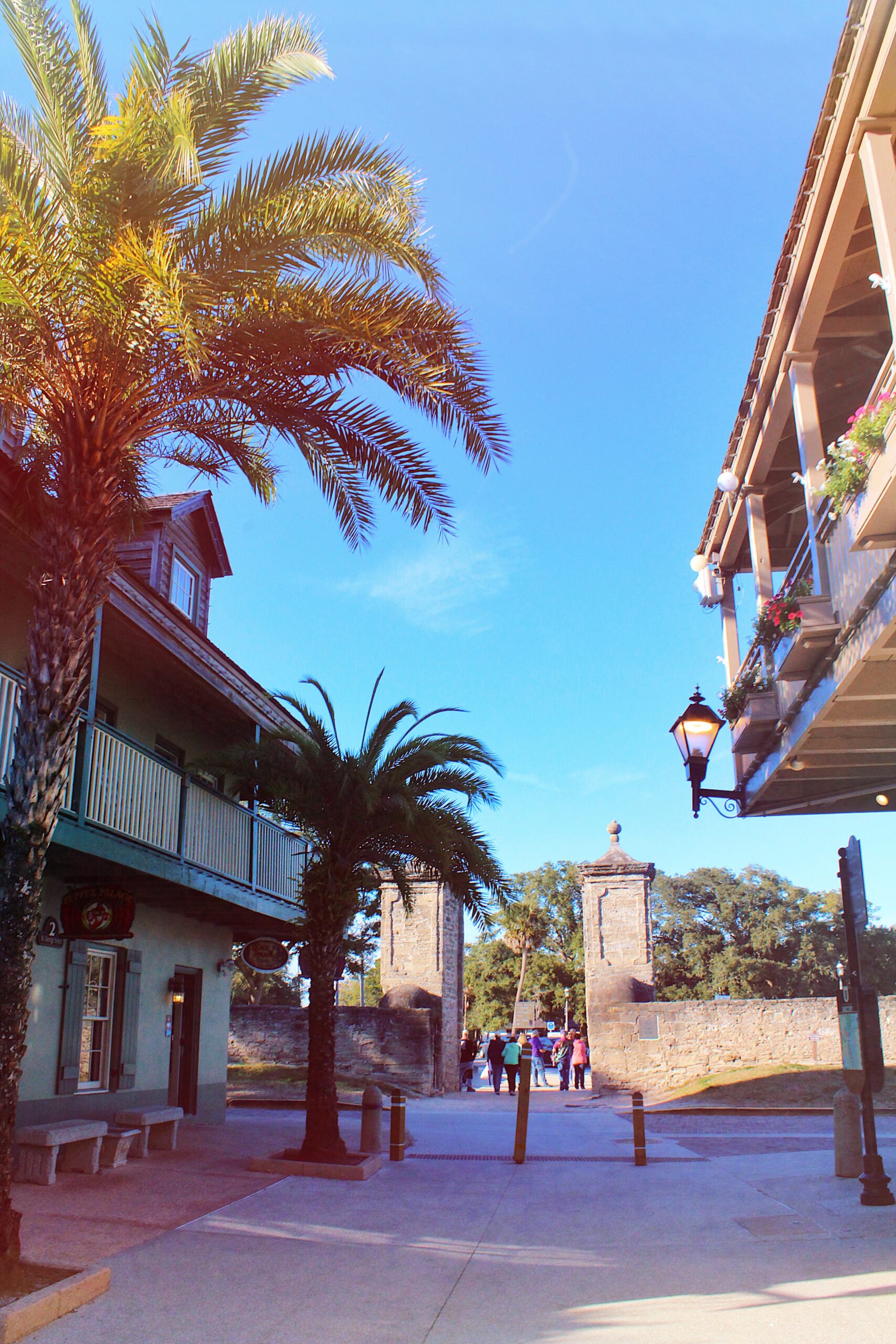

After stopping for lunch at Casa Reina (I’ll get to it in a bit), we made our way to St. George Street, a pedestrian-only street lined with bars, restaurants, and shops.
This street represents the center of the town and the site of many of the reconstructed Spanish colonial buildings in St. Augustine. We grabbed coffee and tea at a cute little store and strolled up and down St. George Street while visiting local shops.
Pass through the Old City Gates
While you explore St. George Street, be sure to check out the Old City Gates and the Oldest Wooden School House.
The Old City Gates, one of St. Augustine’s most recognizable landmarks, is at the north end of St. George Street. Don’t forget to take a photo in front of this historical site!
The Oldest School House is a small wooden structure located at 14 St. George Street. It was built over 200 years ago, with red cedar and cypress, and put together with wooden pegs and handmade nails.
Take a Tour of Flagler College
Flagler College is perhaps my favorite building in all of St. Augustine.

The college is named for industrialist and railroad magnate Henry Flagler, who built it in 1888 as a hotel. The property is a masterpiece of Spanish Renaissance architecture and was one of the most exclusive resorts of its day.
I recommend taking a guided tour of this gorgeous property. On the tour, you will see the courtyard, the grand lobby, the rotunda, the 68-foot domed ceiling supported by eight oak caryatids hand-carved with robed women, the dining room with 79 Louis Comfort Tiffany Stained Glass windows, and the Flagler Room with handcrafted Austrian crystal chandeliers.
Flagler College was the first of Flagler’s series of luxury resorts along Florida’s east coast; others include the neighboring Hotel Alcazar (now, Lightner Museum).
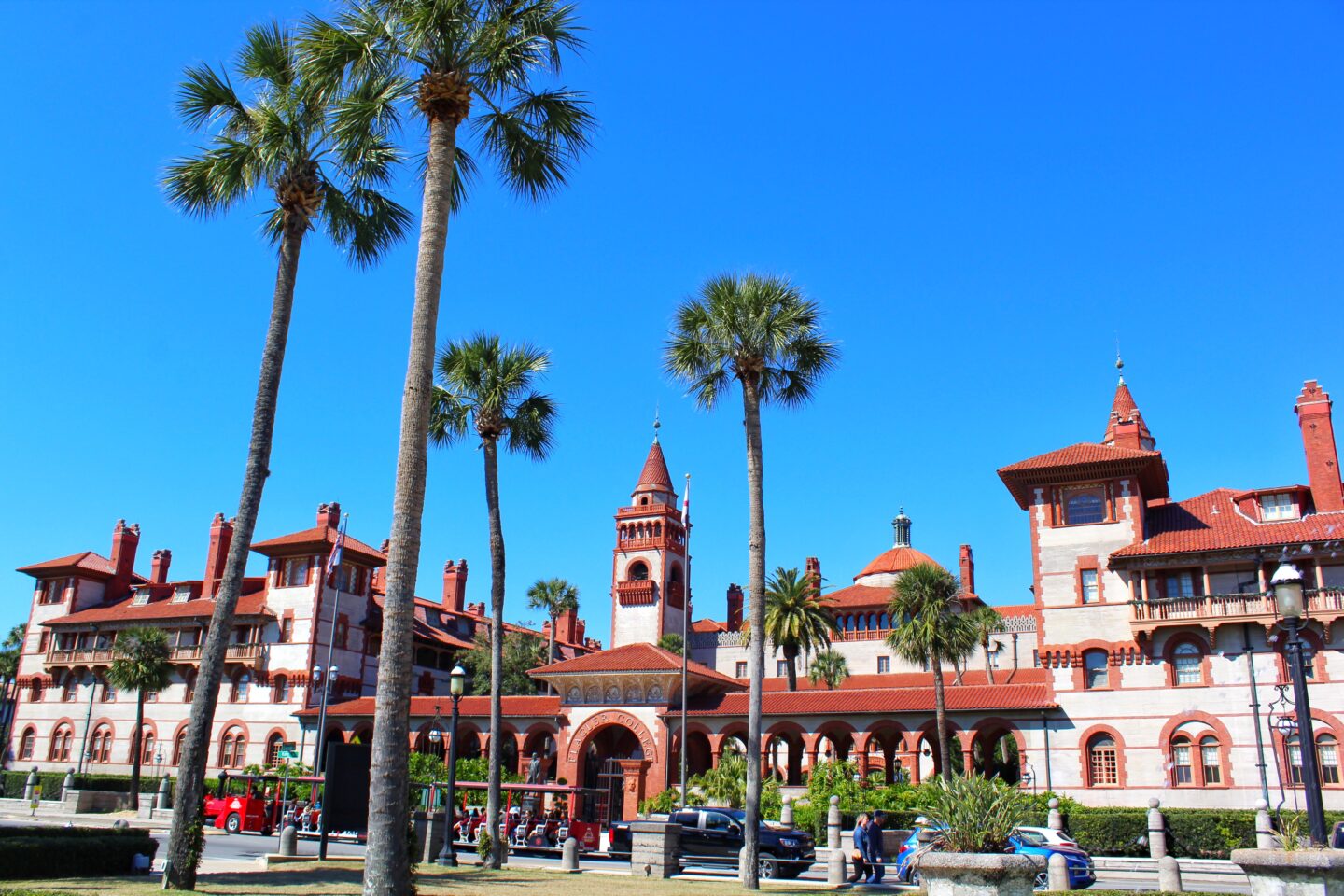
Flagler College – Fun Facts:
- Architects John Carrére and Thomas Hastings were young men right out of college when they designed Hotel Ponce de León (now, Flagler College) and Hotel Alcazar (now, Lightner Museum). They are noted most for the New York Public Library and The House and Senate Office Buildings adjacent to the Capitol in Washington, D.C.
- Louis C. Tiffany is credited with the building’s interior design, including the stained glass & mosaics.
- Hotel Ponce de León was one of the nation’s first electrified buildings. The Edison Electric Company powered the building with steam heat and 4,000 electric lights.
- During the Depression, the federal government-sponsored art programs at the property were attended by Robert Frost, Ernest Hemingway, and Marjorie Kinnan Rawlings.
- The U.S. Coast Guard commandeered the property during World War II for use as a training center.
- Mark Twain, President Theodore Roosevelt, Babe Ruth, and Babe Didrikson stayed at the hotel.
- Henry Flagler’s great-nephew sold the property to a group from Mount Ida College to establish a women’s college, known today as Flagler College.
The Lightner Museum
Across from Flagler College, you will find the impressive Lightner Museum.
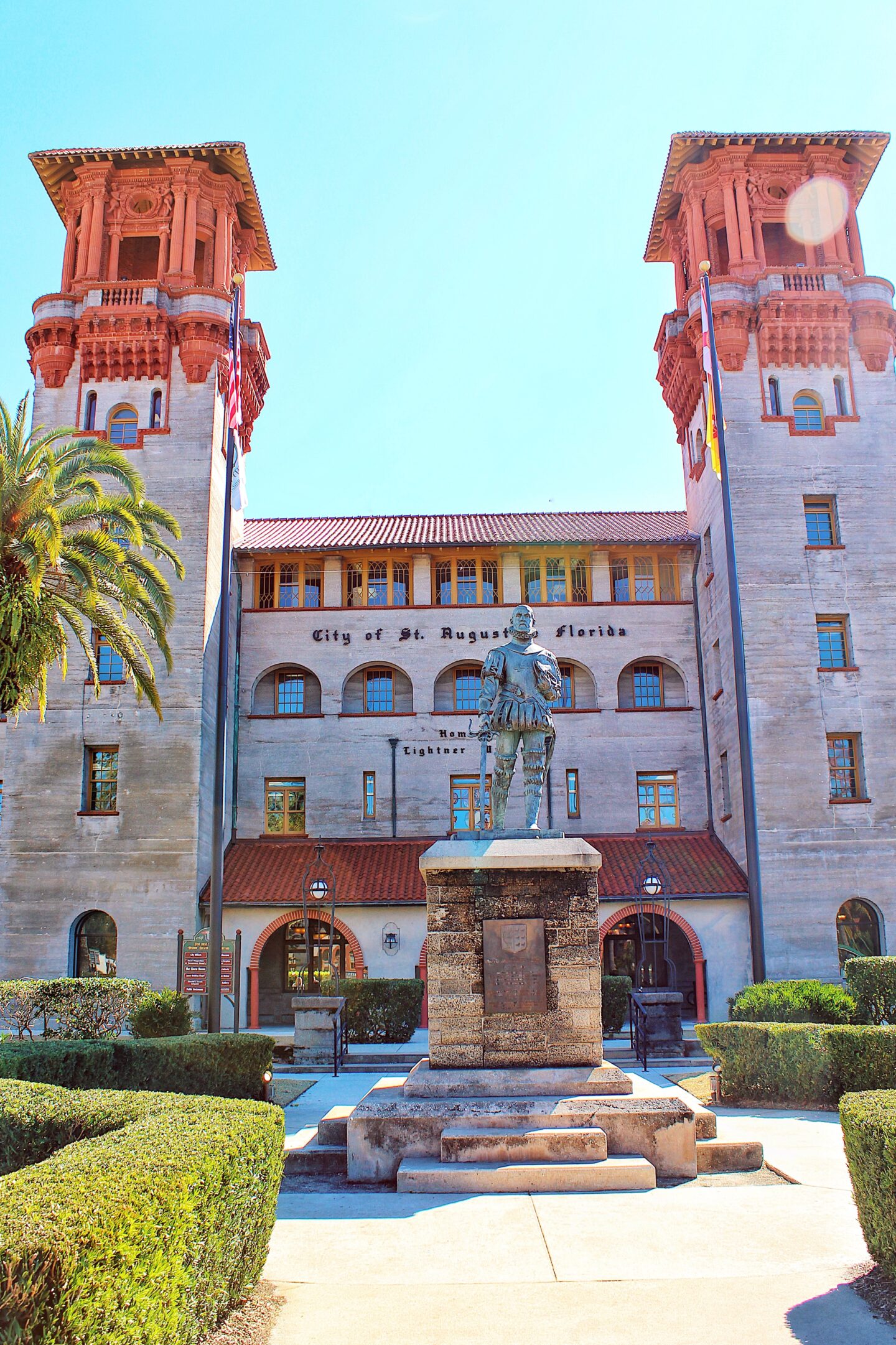
The Lightner Museum occupies the former Hotel Alcazar, a resort also commissioned by railroad magnate Henry Flagler.
The Hotel Alcazar opened in 1889, it was slightly less expensive than Hotel Ponce de León but had lots of amenities for guest enjoyment, like saunas, a casino, archery ranges, and the world’s largest swimming pool at the time.
In 1947, Otto Lightner purchased the building to house his art collection. The museum showcases Lightner’s collection of art and artifacts from the 19th century.
More Things To Do in St. Augustine
There’s so much to do in St. Augustine. Here are more activities for your visit:
- Take a St. Augustine Ghost Tour
- Not Just a Chocolate Tour
- Sunset Cruise of St. Augustine
- Old Jail Museum Tour
- Fountain of Youth
Where to Eat in St. Augustine?
Here are two spots that we loved and recommend:
CASA REINA TAQUERIA & TEQUILA
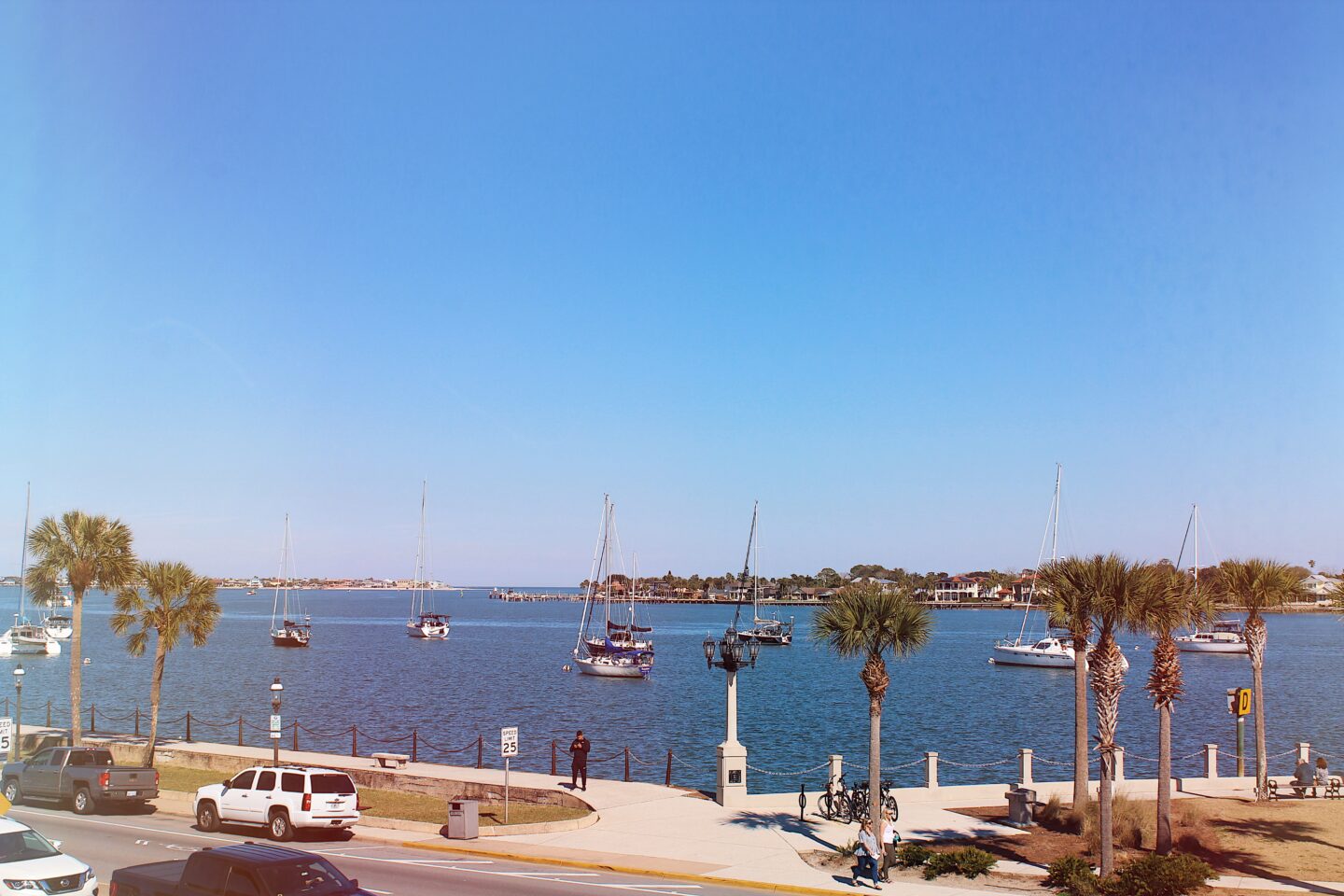
If you want to sip on a margarita while enjoying the flavors of Mexican cuisine, this place is a must. It is located in St. Augustine’s historic downtown area, on the bay front at the foot of the Bridge of Lions.
I ordered the house margarita and the ‘nachos reina style’ – the best nachos I’ve ever had. This restaurant has lots of seating areas, both indoors and outdoors.
I suggest you go during the day to enjoy the outstanding view (see my images above & below).
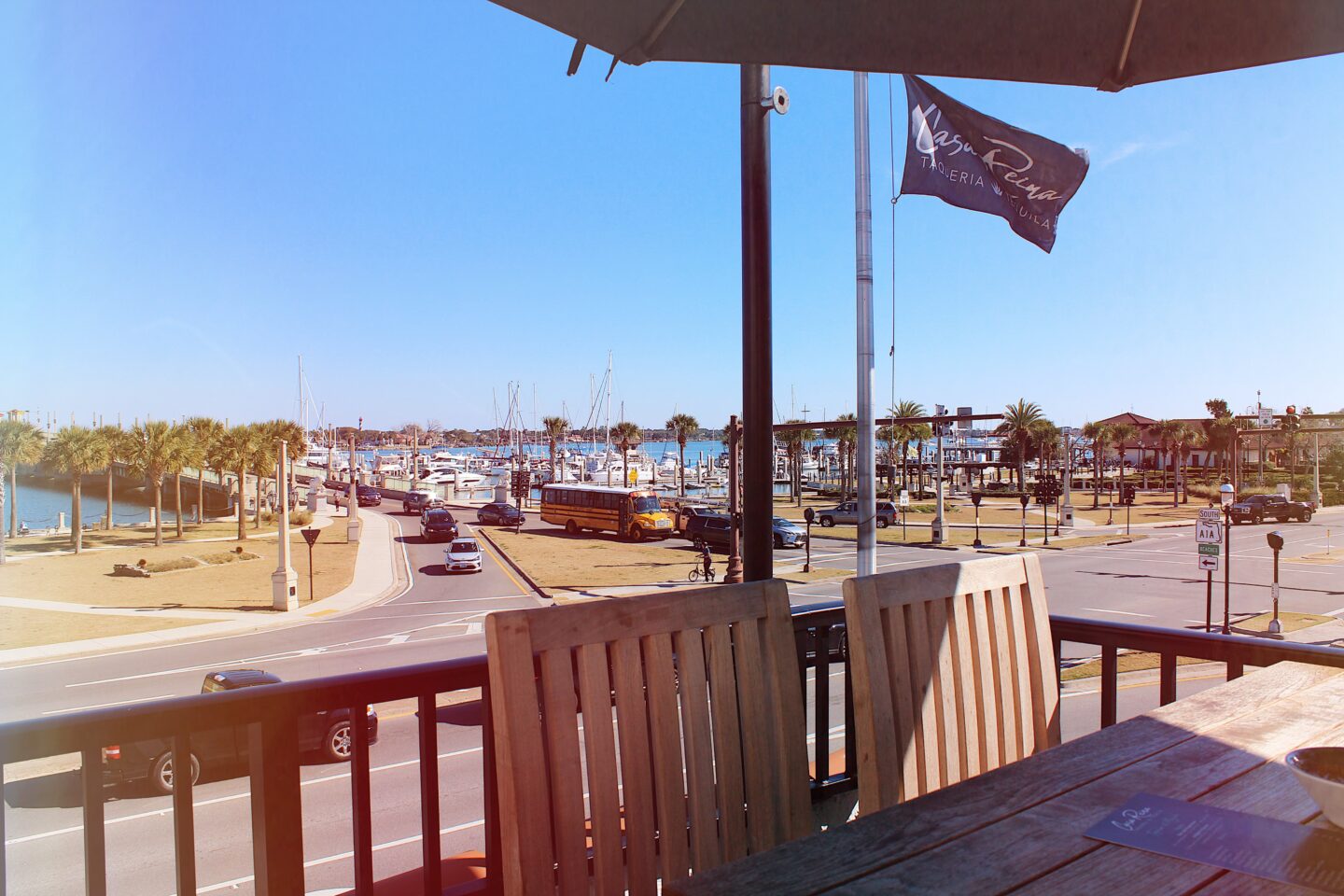
CAP’S ON THE WATER
Cap’s On The Water is a waterfront spot 6 miles from St. Augustine’s historic downtown. This restaurant is a hidden gem that only locals know about (and was recommended by my friend’s husband). Be sure to arrive before sunset, and enjoy dinner from the wooden deck!
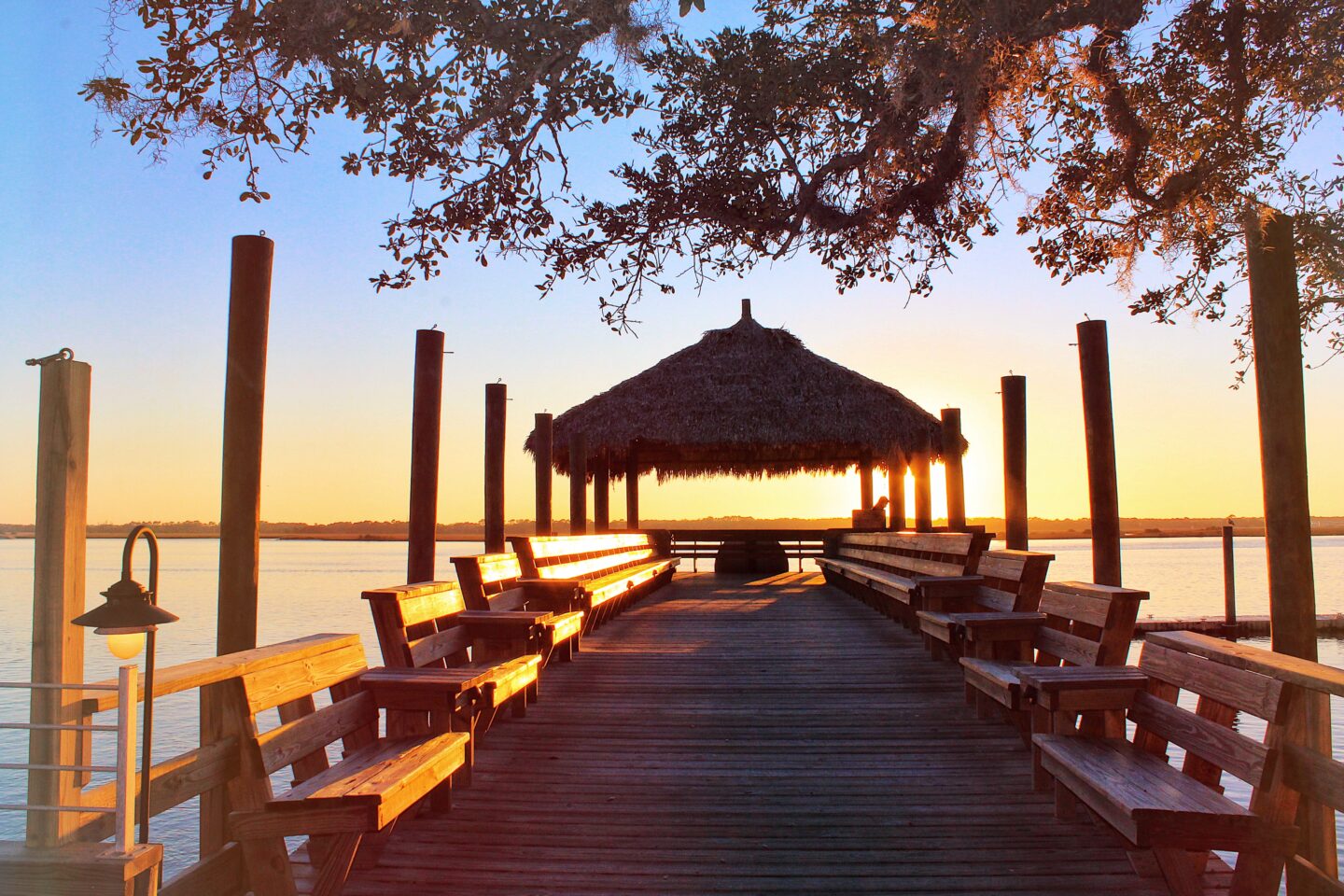
The truffle parmesan fries and the seared catch that came with mashed potatoes & roasted carrots were delicious! If you are looking for fresh local seafood and coastal cuisine, go here.
Where to Stay in St. Augustine?
St. Augustine’s historic center offers a large variety of places to stay from small B&Bs to hotels to this gorgeous resort.
Bed & Breakfast
Click on any of the options below to see the rooms and reviews:
- Bayfront Westcott House St. Augustine
- The Cedar House Inn St. Augustine
- Agustin Inn – St. Augustine
- Pomar House St. Augustine
- Peace & Plenty Inn Bed St. Augustine
Best Hotels in St. Augustine
If you prefer to stay in a hotel, click on the hotels below to see the rooms and reviews for each:
- Casa Monica Resort & Spa
- Hilton St. Augustine Historic Bayfront
- St George Inn – St. Augustine
- Renaissance St. Augustine Historic Downtown
- The Collector Inn & Gardens
Or see all St. Augustine hotels and their availabilities here.

Book your stay at Casa Monica here.
An interactive map of St. Augustine, FL
Tours recommended for St. Augustine:
More info for your days in St. Augustine
When was St. Augustine founded?
The city of St. Augustine was founded on September 8, 1565, by a Spanish soldier named Pedro Menéndez de Avilés. He named the settlement “San Agustín,” as his ships bearing settlers, troops, and supplies from Spain had first sighted land in Florida eleven days earlier on August 28, the feast day of St. Augustine.
When is the best time to visit St. Augustine?
I recommend visiting between October and April. We went in January and it was not busy, plus the weather was very pleasant.
The rainiest months are usually June, July, August, and September.
What is St. Augustine known for?
St. Augustine is well known for the fort, Castillo de San Marcos, which was built by the Spanish settlers to defend Florida and the Atlantic trade route, as well as Ponce de Leon’s Fountain of Youth, containing healing water that enhances your appearance.
St. Augustine is also known for Henry Flagler, a railroad tycoon that built luxury resorts along Florida’s east coast, and for being the oldest continuously settled city in the United States.
How far is St. Augustine?
The trip from Miami to St. Augustine is around 311 miles (500 km) via Florida’s Turnpike and I-95. The drive usually takes 5 hours, with normal driving conditions.
If you are visiting St. Augustine from Orlando, the trip is a little over 100 miles (165 km). St. Augustine’s location makes it a perfect day trip or weekend destination.
Which airport is best for flying to St. Augustine?
Northeast Florida Regional Airport is a private and commercial aviation facility that is 5 miles from St. Augustine, a 10 minute drive.
Jacksonville International Airport (JAX) is 51 miles from St. Augustine, a 1 hour drive.
Orlando International Airport is 121 miles from St. Augustine, a 2+ hour drive.
How much is the shuttle from Jacksonville to St. Augustine?
The drive from Downtown Jacksonville to Downtown St. Augustine is 41 miles (66 km). There are several shuttle companies that offer direct shuttle services from Jacksonville to St. Augustine, and the cost varies from $70-100 depending on the company that you hire.
St. Augustine Itinerary – Day 3
If you are looking for additional days of activities during your stay in St. Augustine, a trip to a nearby town or city is always a brilliant idea. Below are some of the best options from St. Augustine.
Day Trips from St. Augustine:
Ponte Vedra Beach, Daytona Beach, Jacksonville, Atlantic Beach, and Amelia Island, are all within 25-70 miles of St. Augustine.
Another popular option is to drive from St. Augustine to Savannah, Georgia. The drive is 176 miles (283 km) and takes 3 hours with normal driving conditions. Savannah is a charming Southern city with horse-drawn carriages, antebellum architecture, and a historic district filled with cobblestoned squares. See my article on 5 Hours in Savannah here!
You can also drive from St. Augustine to Charleston, one of my favorite cities in South Carolina. The drive is 276 miles (445 km) and takes around 4 hours. See my article on How to Spend 24 Hours in Charleston here!
A final note!
In February of last year, we stayed one week in Atlantic Beach, a beautiful city with laid-back beaches 15 miles from downtown Jacksonville. To read about our stay at a resort on one of the prettiest beaches in Jacksonville click here.

Staying either in Jacksonville or Atlantic Beach and then making a day trip to St. Augustine is a great option for making the most of your visit to northeast Florida.
What will you do with your days in St. Augustine?!
TRAVEL & PACKING ESSENTIALS:
These are some of the essentials that I love to bring! I always check the weather forecast, but I also like to be prepared with this compact umbrella, a light rain jacket, this non-white cast sunscreen, and comfortable sneakers (my favorite hands down).
If you enjoyed this St. Augustine guide, please share it with friends 🙂
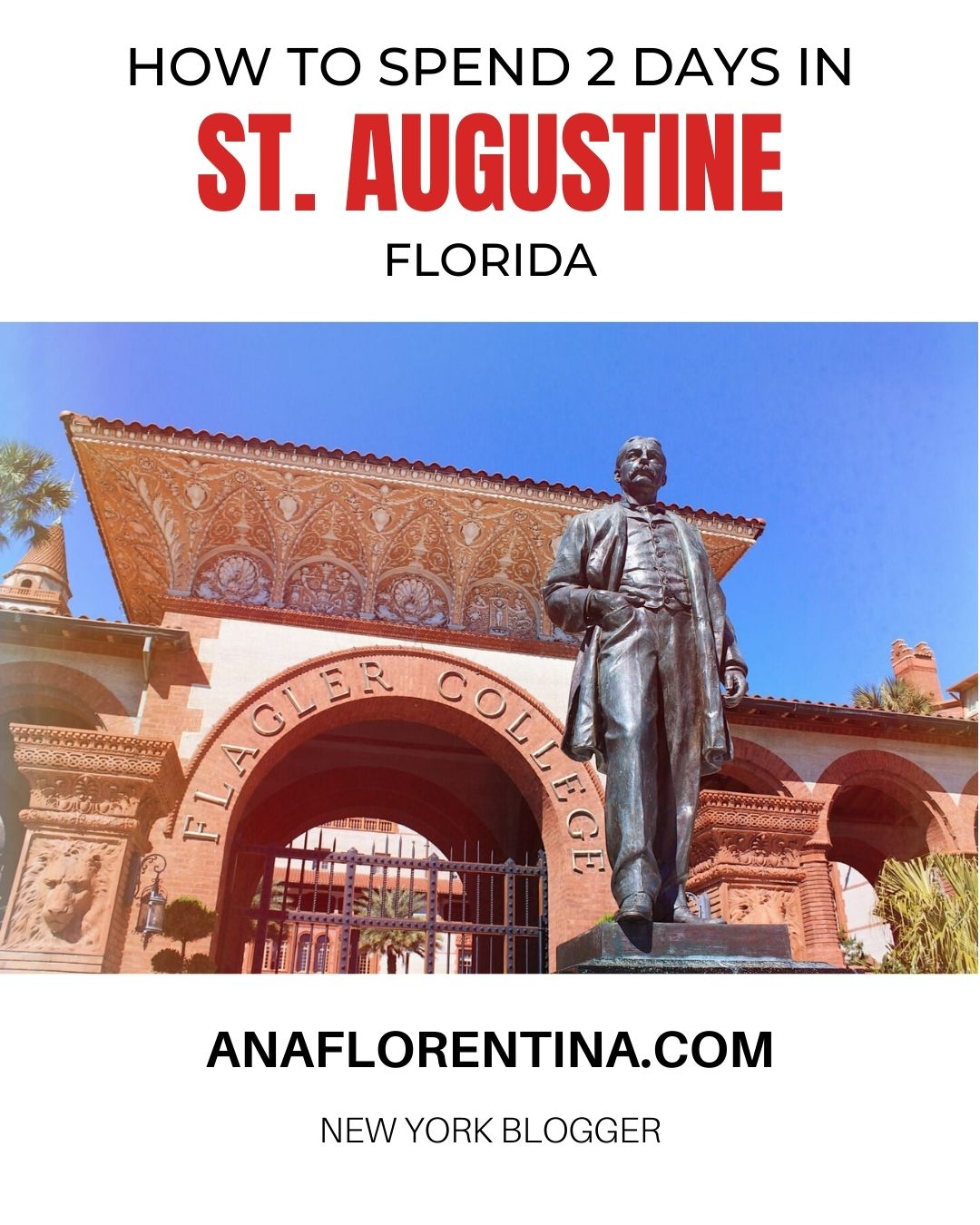

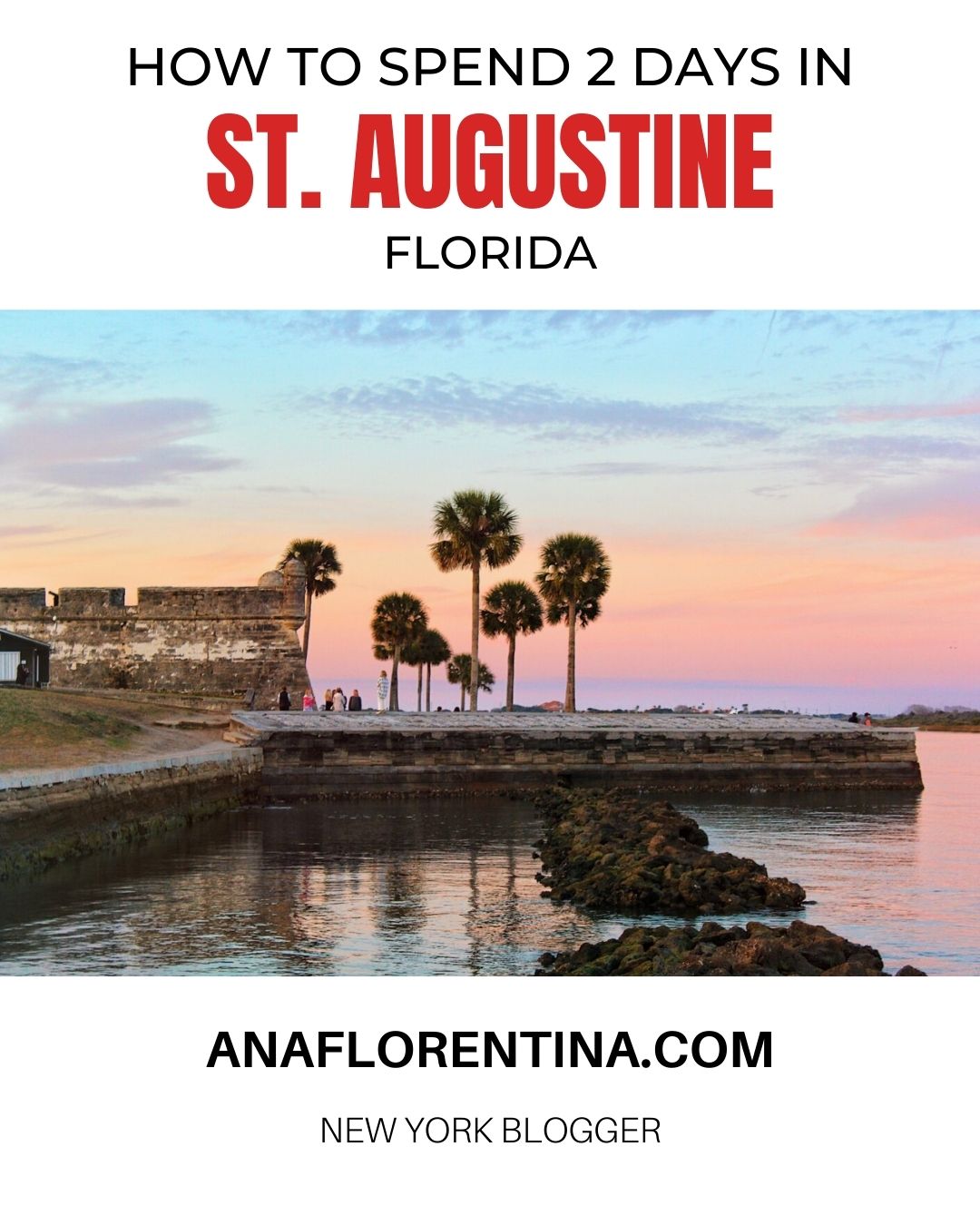
More cities you will love!
- COLORADO: Denver & Boulder
- FLORIDA: 5 Beautiful Things to Do in Miami
- FLORIDA: A Hidden Gem in The Florida Keys
- FLORIDA: Jacksonville & Atlantic Beach
- GEORGIA: 5 Hours in Savannah
- SOUTH CAROLINA: 24 Hours in Charleston
- MAINE: 11 Very Best Things To Do in Portland
- NEW YORK: 19 Free Things to Do in NYC
- VERMONT: 2 Days in Woodstock
- WYOMING: Centennial


